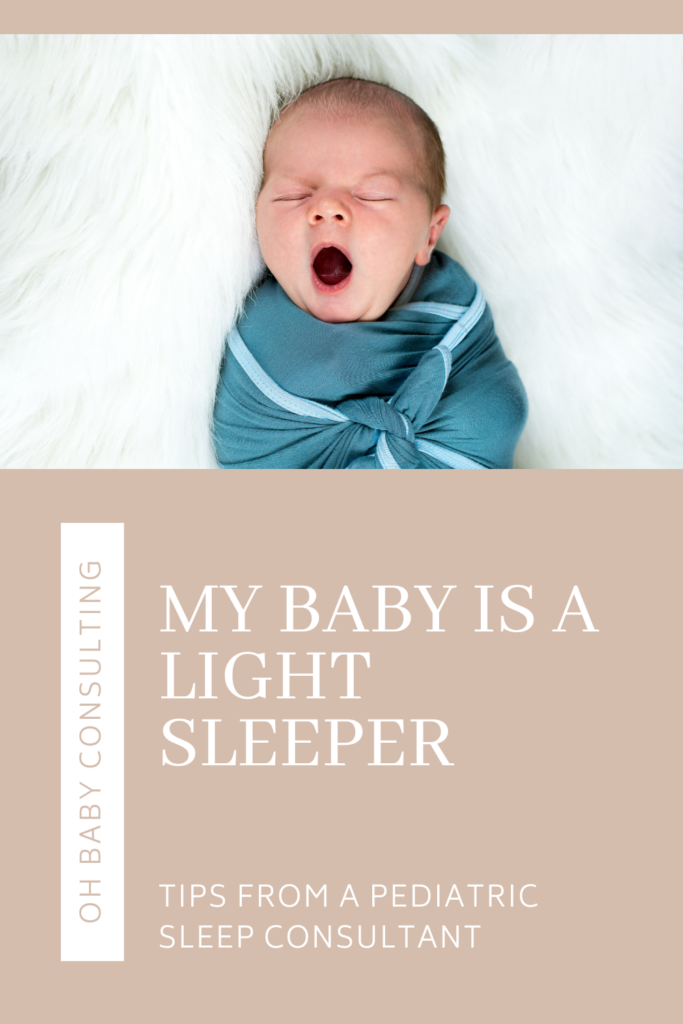Do you think your child is a light sleeper? If your child,
- seems to wake up every time you walk by their door
- goes from fast asleep to wide awake the moment you lay them down
- wakes up frequently throughout the night for no apparant reason
Then you probably answered yes to my question.
I hear this concern from parents all the time. They tell me that their child wakes up so easily and once they’re awake, they’re incredibly difficult to get back to sleep.
Here’s what you need to know:
All babies are light sleepers, and all babies are heavy sleepers.
The same is true for adults as well.
Baby sleep cycles
A full night of sleep is comprised of many different sleep cycles which include stages of light sleep & deep sleep. Regardless of how long your child spends in each distinct stage, the fact of the matter is that they are fluctuating between light and deep sleep all night long.
However, babies do have shorter sleep cycles as compared to adults and therefore spend nearly twice as much time in light stages of sleep than we do. Because there is more chance of a full wake up during light stages of sleep, there are inherently more opportunities for your child to potentially wake.
However, this does not mean that your child is doomed to wake up several times all night long. In order to help your child stay asleep through both deep and light stages of sleep, you need to teach them how to connect their sleep cycles independently.
Helping your child sleep longer at night
The main difference between a child who is waking up a lot and a child who sleeps all night long is that the latter child is just not waking up between sleep cycles.
So what is the key to helping your child learn to connect sleep cycles?
Make sure they are falling asleep independently.
If there is something that your child needs in order to fall asleep and this thing is external to them and out of their control, they are going to be more likely to wake between sleep cycle and need that thing again.
Rocking to sleep, feeding to sleep, even pacifiers are all examples of commonly used external sleep strategies (also known as sleep props). If your child falls asleep eating then they’re likely going to need another feeding when they wake up again at the end of the next sleep cycle – not because they’re hungry but because they want to get back to sleep. If they get rocked to sleep, they learn to rely on that motion as part of the process. Then when they wake up at night, they’re stuck that way until you come in and help them get back to sleep. These wake-ups are often accompanied by a lot of crying in order to get your attention, which wakes your child up even further and requires even more soothing to get them settled and back to sleep.
Here’s the thing – your friend’s baby, the “good sleeper”, the one you’ve come to refer to as a unicorn, has the exact same sleep cycles as your baby who wakes up several times a night.
The difference is one can connect sleep cycles independently and one cannot. But if your friend’s baby can do it, so can yours!
So although you can’t stop your child from sleeping lightly sometimes, you can absolutely teach them how to sleep independently, and once you do, you and your child can both look forward to full nights of deep, rejuvenating, uninterrupted sleep.
If this all feels impossible, please reach out to get connected with a plan + support to help make this your reality!














